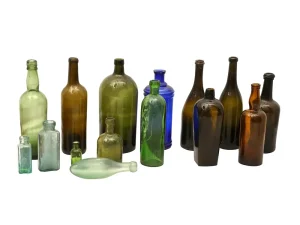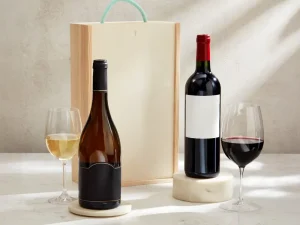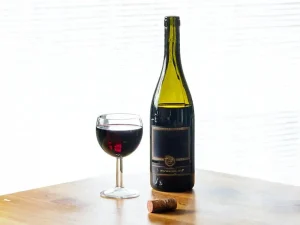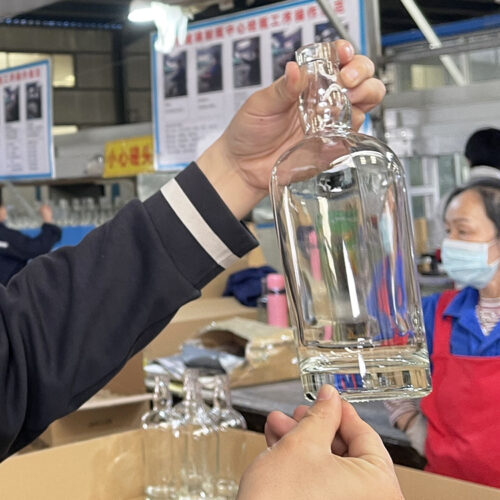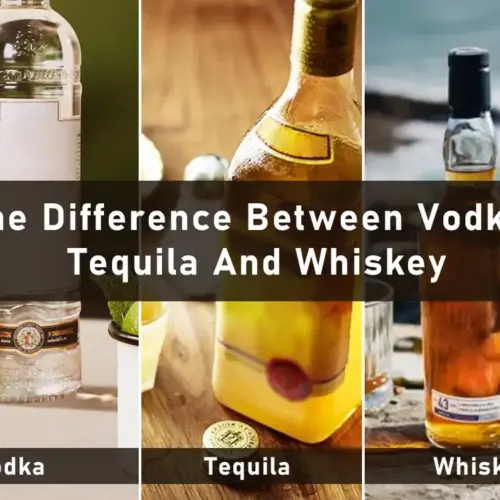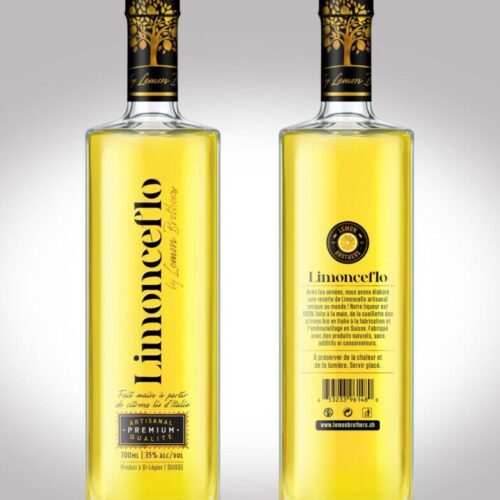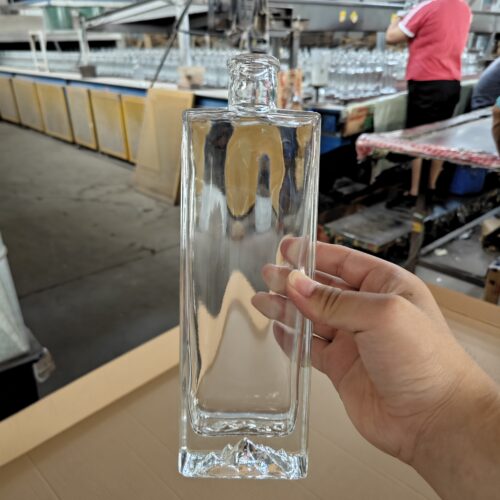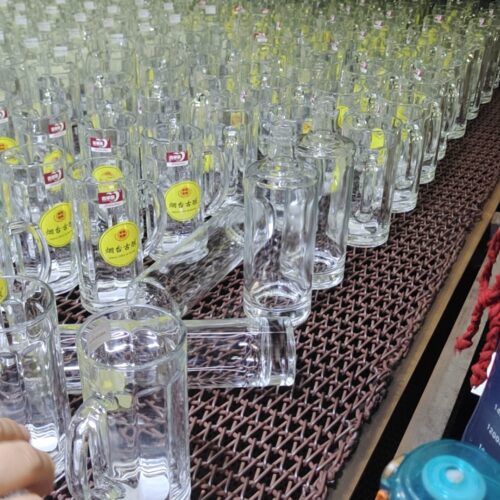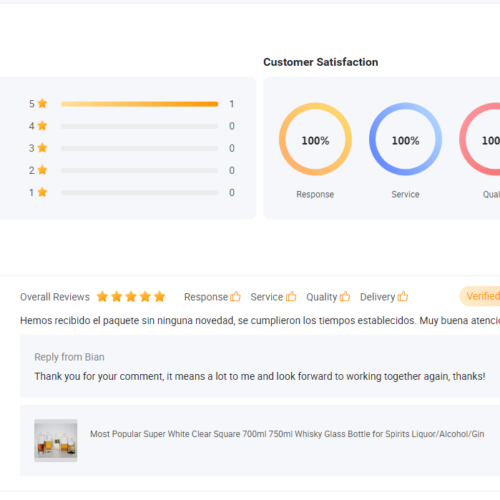When standing in a wine shop, you see several wine bottle shapes. You find some bottles are round, some are slim, and some shapes have unique art designs. Seeing those varieties of bottle shapes, you must wonder why they are so. Right? Those shapes are not designed by chance, but they have a complete history.
Each shape has a unique name, and each name has a unique history. Knowing those shapes and names is crucial if you are a regular wine consumer. It will help you easily purchase wine in any corner of the world. So, are you curious about the wine bottle’s shapes and names? This article is all about exploring wine bottle shapes with their names. Let’s get started!
History of Wine Bottle Shapes
As I said, each bottle shape has a unique history and background. From ancient times to the recent era, the shape of wine bottles has undergone continuous changes. The evaluation of the shapes of the bottles indicates the advancement of technology. Wine bottles are known from the Egyptian era. In those days, the wine was stored in clay amphorae( a jar with a pointed bottom).
In some areas, the wine was stored in animal skin jars of different shapes. These wine-storing methods were standard in the 16th century. However, in the 17th century, glass bottles were first introduced to store wine. The shapes of those bottles were round onion-like to store a significant amount of wine. Those glass bottles were rare, expensive, and used by royal families.
In the late 17th century, English glassmakers introduced wine bottles with an elongated shape. These bottles were easy to carry, store, and transport. In different regions in the 18th and 19th centuries, glassmakers started making bottles of specific shapes. With time, in the 20th and 21st centuries, bottle shapes have become more advanced.
Different Wine Bottle Shapes and Meanings
Wine bottles are like fingerprints—no two are exactly alike. Each has a unique shape, size, and background history. So, let’s explore the world’s typical shapes and names of wine bottles.
1- Bordeaux Bottles
Bordeaux bottles are an innovation of the 12th century. They were first introduced in the Bordeaux region of France, so they are named after this region. The earlier shape of these bottles was irregular and onion-like. However, in the 18th century, winemakers innovated in design and made them high-shouldered.
Today, these bottles have become standard and adapted to advanced technology. The typical features of this shape include a tall cylindrical body with straight shoulders. They have medium to deep punt(Indentation at the bottom). It helps the bottle stay stable and facilitates easy transportation. Moreover, Bordeaux bottles include a narrow neck.
This neck does not allow oxygen exposure, keeping the wine fresh for a long time. The thick glass of these bottles also improves wine aging. With an enriched history, Bordeaux bottles have become the symbol of premium wines. This bottle comes in two prominent colors: dark green for red wine and light green for white wines.
2- Burgundy Bottles
Burgundy bottles are another typical shape of wine bottles. They originated from the Burgundy region of France, which has been known for making wine for 1000 years. The earlier shape of these bottles was irregular and could only store a small amount of wine. However, with time, winemakers made several changes in their design.
Now, Burgundy bottles feature sloping shoulders and a round and wide body. They mostly have flat bottoms with low indentation. The neck of these bottles is longer to allow easy pouring of wine. The signature wines of Burgundy bottles are Pinot Noir, Chardonnay, and Viognier. Commonly, these bottles can store 750ml of wine.
3- Rhône Bottle
Rhône bottles originated from Rhône Valley, France, 2000 years ago. In shape, these bottles somehow match with Burgundy bottles. But some variations set these bottle shapes apart. For example, Rhône bottles have straight bodies with less prominent curves. They have a lightly extra long neck that gives a refined shape to the bottles.
One of the significant features of these bottles is that they have no punt. This means Rhône bottles have no indentation and a flat bottom. In the earlier days, these bottles were made with wood. However, in the 19th century, this shape was given to glass. Rhône bottles are easy to store and handle. Moreover, these bottles recall wine from the Rhône Valley, such as Côte-Rôtie and Tavel Rosé.
4- Champagne Bottle
Champagne bottles are the most iconic glass bottles. These bottle shapes were invented in the 17th century. The main purpose of champagne bottles is to withstand high pressure from secondary fermentation. Secondary fermentation creates high-pressure bubbles in wine when sugar is added. In the earlier days, Champagne bottles were not strong enough to handle the pressure.
But now, they can handle the 6 atm pressure of sparkling wines. These bottles have sloping shoulders and a deep indentation at the base. With long and thick necks, Champagne bottles have wire cages called Musselet. These cages tightly seal the corks and prevent the wine from popping out. Champagne bottles come in various sizes, and the name of each bottle changes with volume.
5- Alsace/Mosel Bottle
Alsace/Mosel bottles originated from Germany and northeastern France. The shape of these bottles was slender and taller. The reason behind this shape was easy transportation between these two countries along the river. Slight changes were made in the 19th and 20th centuries, but the signature shape remained unchanged.
Alsace/Mosel bottles have a smooth sloping shoulder shift from neck to bottom. With long and narrow necks, these bottles are efficient when pouring wine. They have a flat bottom with no indentation. However, lightweight glass in Alsace/Mosel makes them suitable for fresh wines. These bottles commonly hold Riesling, Gewürztraminer, and Muscat.
6- Port and Dessert Wine Bottle
Port and Desert are the two types of sweet wines. In the 16th century, these sweet wines, also called fortified wines, were very popular. But there were no such bottles to transport fortified over long distances due to less age. So, in the 18th century, Port and Dessert bottles with thick glass were made. These bottles feature shorter and broader bodies.
The thick glass prevents UV rays and oxygen exposure, saving the wine from spoiling. Moreover, Port and Dessert bottles have high shoulders with Wax or T-stoppers, which provide airtight sealing. Port and Dessert bottle types differ with different fortified wines. For instance, Tawny Port and Madeira bottles are specified for Tawny Port and Madeira sweet wines.
7- Chianti Flask
The Chianti Flask is one of the iconic symbols of Italian winemaking. These bottles originated from Italy in the 14th century. Their primary purpose was to transport the wine safely. However, the Chianti Flasks’ shape was round, making it difficult to stand upright. So, in the 16th century, straw wrapping was introduced to enhance durability and stability.
This straw basket, known as “Sala,” protects bottles and prevents them from breaking. Chianti Flasks still have round bodies with narrow necks. These bottles are commonly related to tradition and are still used in Italy. Though Chianti Flasks are replaced with modern bottles, you can still use them as a decorative piece after use.
Does the Bottle Shape Affect the Taste?
Well, the shape of a wine bottle does not directly affect the taste. However, it can affect the overall aging process of the wine. Let me explain this point with examples.
- Some wines taste better with time due to the aging process. The shape of the bottle helps enhance this phenomenon. For example, Bordeaux bottles with high shoulders help improve aging.
- Burgundy bottles allow some oxygen exposure, which changes the taste of wine and makes it more soft. However, Champagne bottles with narrow necks do not allow oxygen to pass and keep the wine fresh.
- Sediments develop in the older wine, which can be bitter and affect your taste. The shape of the bottle also influences sediments. It indicates how the bottle keeps the wine clear. For example, Bordeaux bottles trap sediment in the bottom and prevent it from pouring into your glass.
- The shape of the wine bottle also controls the temperature, which can alter the taste. For instance, Champagne bottles keep the wine cold to keep the bubble effect unchanged. However, Port and dessert wine bottles keep the wine warm for a better taste.
Conclusion
Wine bottles come in various shapes. In this article, I have discussed seven common shapes of wine bottles. All those bottles have specific names and meanings. With an enriched history, each bottle holds a particular type of wine. For example, Bordeaux bottles originated in France. These bottles have high shoulders to keep the wine cold and dry.
However, Burgundy bottles were invented 1000 years ago. They have round and wide bodies to hold much of the wine. Other bottle shapes include Rhône, Champagne, and Chianti. All these bottles influence the taste of wine to some extent. So, they are specific for special types of wine. With the shape’s name, you can recognize the wine in different countries.

